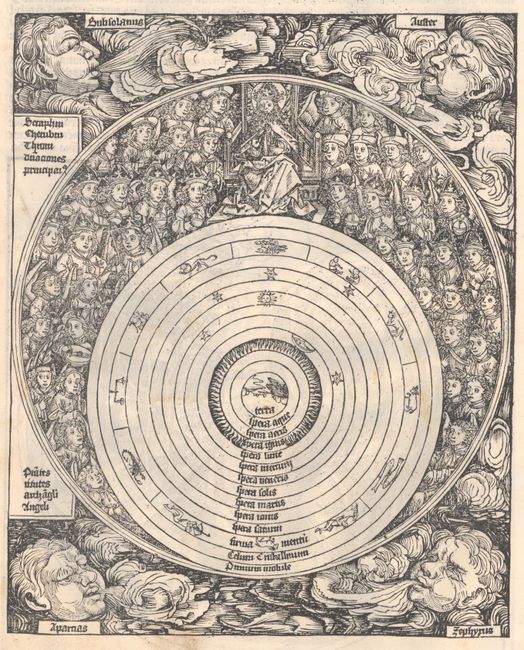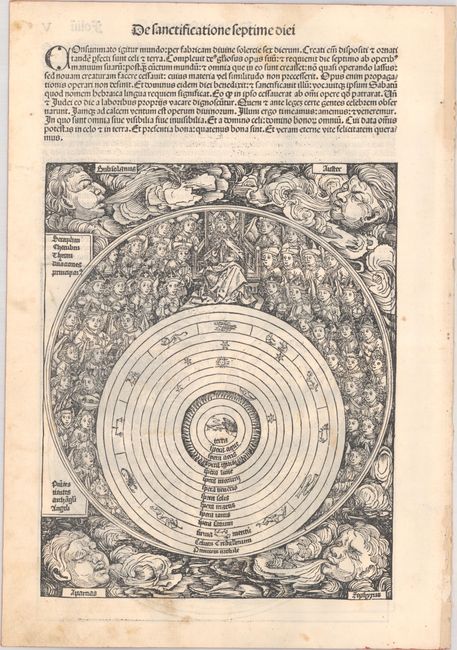Subject: Incunabula
Period: 1493 (published)
Publication: Nuremberg Chronicle
Color: Black & White
Size:
11.1 x 16 inches
28.2 x 40.6 cm
Hartmann Schedel's Nuremberg Chronicle (Liber Chronicarum) was published in two editions, Latin and German, both in 1493, appearing in print just before Christopher Columbus' discoveries completely re-shaped the European view of the World. This splendid work presented the history of the world in a pictorial encyclopedia with approximately 285 pages of text and 1,800 woodcut illustrations. Among these illustrations are views of towns and cities throughout Europe and the Near East. The majority of these views are entirely imaginary. In fact, 49 of the views are actually printed from the same group of 14 woodblocks. There are also 30 double-page views of cities with more realistic images. In addition to the topographical images, there are an enormous number of other subjects, including diagrams of the Creation, comets, family trees, portraits & biblical scenes. The text was compiled and edited by Hartmann Schedel, printed by Anton Koberger, with illustrations designed by Michael Wohlgemuth and Willem Pleydenwurff, who cut the woodblocks, probably with the assistance of their apprentice, Albrecht Durer.
This wonderful set of plates presents the story of the Creation of the World with an imaginative sense of design and symbolism. The story is presented in a series of circular diagrams with the hand of God in the upper left corner. The first leaf shows the celestial choir (God's creation of the angels) surrounding the Greek word "yle" representing the primeval matter from which all things are made. The second plate represents the division of light from darkness with two simple circles. Next the creation of the firmament is depicted with two additional rings of space. The next plate adds one more ring representing the creation of earth, water, fire and ice. The next plate shows the thirteen symbolic rings of space containing the sun, moon and stars surrounding the earth. Next the circle is filled with the creation of birds, fish and animals. Then God created man in his own image and in this illustration the hand is replaced with an image of God with Adam emerging from the earth. In the final plate, the Sanctification of the Seventh Day, God is surrounded by the heavenly choir above the firmament of thirteen circles with the earth at the center and the four winds filling each corner. These windheads have a strikingly different artistic style with the rest of the engravings and have been attributed to Albrect Durer. An interesting element in the progression of series is that the plates for the second and third day have been printed in the wrong order, as in all issues of the Chronicle.
References: Wilson, pp. 82-95.
Condition: B+
A few light stains, but overall very good. Still bound together in a signature.







